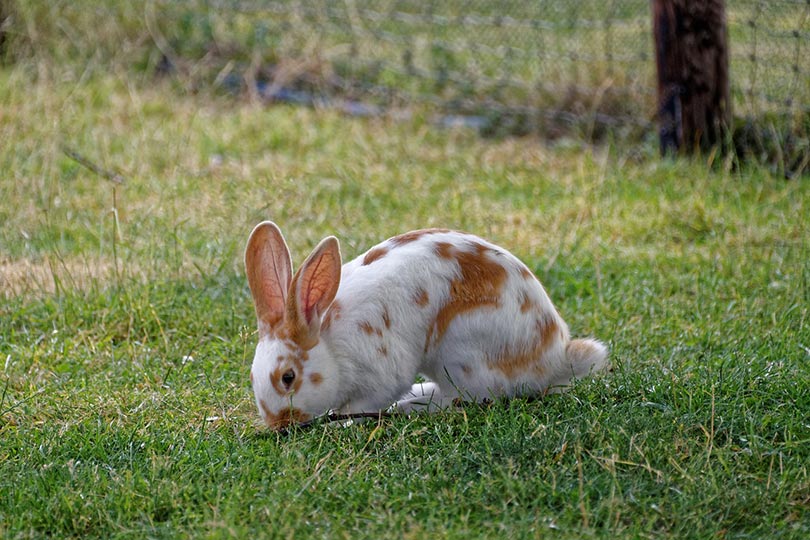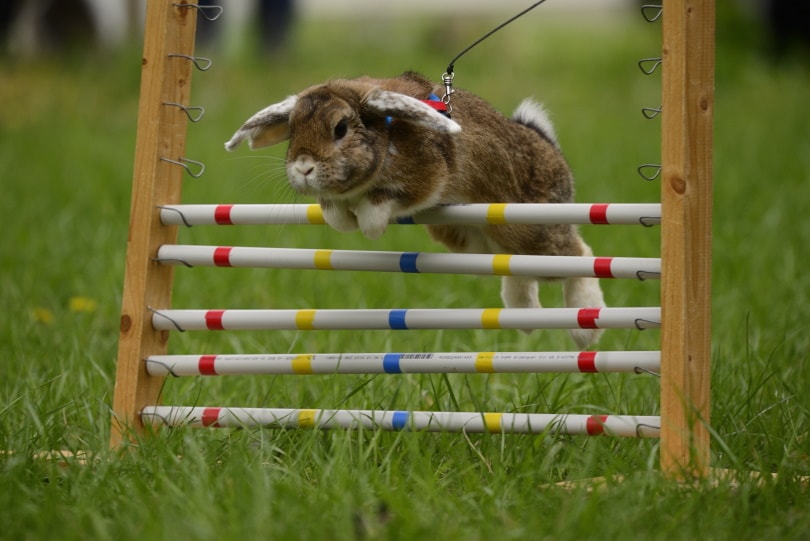
Rabbits can seem like an enigma when it comes to their anatomy. Their huge ears and big eyes have obvious purposes, but what about their tails? A rabbit’s cotton tail has loads of uses and is a vital part of a rabbit’s body. Rabbits have tails for two primary purposes: to help them evade predators and for communication.
The group that rabbits belong to all have tails (Lagomorphs), and each uses its tail for a similar purpose. Rabbits have tails to help them survive in their natural environment; a rabbit’s tail is almost like a multi-tool that serves different functions that help the rabbit survive and thrive in the wild.

What Do Rabbits Use Their Tails for?
Rabbits use their tails primarily for communication and predator evasion. They can also use their tails for balance, but the counterbalance is quite limited as their tails are short. Rabbits mainly use their tails to escape predators and communicate with their owners and other rabbits (particularly in the wild).


How Do Rabbits Use Their Tails for Communication?
Rabbits need to communicate both as pets and in the wild. Rabbits in the wild are a social species that live in groups inside warrens, which can house as many as 30 individuals! Because of this, they need a quick and effective communication method, particularly regarding danger. In addition, because rabbits are a prey species, they’re always on the lookout for predators.
A rabbit out in the field will need a fast way of telling their warren-mates of an approaching predator (like a fox), and they often use their tails to do this. Their tails have a brilliant white underside which the rabbit uses as a signal 1to other rabbits. They normally hold their tails tucked into their bodies, and the top of the tails are the same color as the rest of the rabbit (usually), so it won’t be noticeable. However, a sudden flash of white can be very noticeable against darker or more muted backgrounds, which is why their tails are so effective.
A rabbit signaling to others will raise and lower its tail (known as flashing) and even thump it along with its hind legs to get the other’s attention. Rabbits also use their tails in body language that humans often see; pet rabbits that are upset or defiant will wag their tails (the opposite to dogs) and prick their tails up if they are interested in something. Rabbits also use their tails to signal that they’re looking for a mate 2, alongside other cues.

How Do Rabbits Use Their Tails for Predator Evasion?
If you’ve ever looked at a rabbit’s tail, you may have noticed its fluffy, snow-white underside. It has an important purpose, and most rabbits have this color difference. When a predator is chasing a rabbit, its tail is a flashing distraction to them. Usually, a predator pursuing a rabbit will focus on its movements and try to predict them to close in on the kill. This is thrown off 3 by the rabbit’s zig-zagging movement and the flashing of their white tails. The white gives the predator a much smaller target to focus on. The darting, weaving tail can become too distracting for the predator and help the rabbit successfully evade capture.
How Do Rabbits Use Their Tails for Balance?
Usually, animals that move fast and turn hard will use long tails to counterbalance. Animals like the Cheetah have long, muscular tails, which act as a counterweight and keep them on course while pursuing prey. This isn’t precisely the case for rabbits: their tails are short compared to their bodies.
While they act as a counterbalance for their darting and weaving movements, they’re not entirely effective. Rabbits stay on course by performing aerial acrobatics instead, twisting and turning in the air (known as binkying), which helps them evade capture. As an aside, rabbits in a safe, calm, and non-stressful environment will binky when they’re really happy!


Why Do Rabbits Have Short Tails?
Rabbits have a good reason for having short tails. Rabbits in the wild live in tightly twisting and turning tunnel systems called warrens, which have low ceilings and small entrances. If a rabbit needs to dart into their warren when being chased by a predator, a long tail can easily be damaged on the outside or ceilings of the tunnel.
A predator can quickly grab onto a long tail and use it to pull a prey animal back, too, so smaller tails are invaluable. Rabbit tails have 15–16 caudal vertebrae 4 that form their tails, so they have a great range of movement. However, compared to other animals, their tails are small; cats, for example, have an average of 18–23 vertebrae.

Final Thoughts
Rabbit’s cotton tails are a famed part of their overall look, but they have much more function to their form. A rabbit’s tail can be used for communication, balance, and the evasion of predators. The fluffy white of a rabbit’s tail can signal danger to other rabbits or confuse predators on the hunt. They can also be used to show displeasure by being wagged at their owners. Ultimately, a rabbit’s tail is an important part of its body that has many uses, despite being often overshadowed by long ears and big teeth.
Featured Image Credit: Mike B, Pexels









